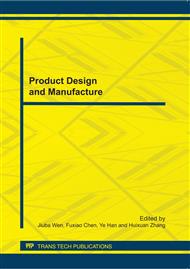p.51
p.56
p.61
p.65
p.70
p.74
p.81
p.85
p.89
FEM Analysis on a Rear Axle Housing Oil-Leakage Prediction of Four-Wheel Farm Transporters Based on COSMOS
Abstract:
A finite element method (FEM) analysis based on COSMOS study with the aim to find the causes and effects of deformations in the interface between the rear axle housing and the central gear house of the four-wheel farm transporters during operation has been performed. The present design is analyzed with the aid of a mixed-fidelity, or mixed-grain, FE-model. Boundary conditions are defined on the bushings in front of the rear axle and on the air bellows behind the rear axle. The different load scenarios are represented by forces either on the wheels, the central gear or on the rear axle housing. The simulated results showed that with the worst combined load case for the different proposed design solutions suggested that modified design with a thicker flange and a removed stiffener would be significantly better than the present design; the simulated max displacement is about 0.5 mm and satisfied the design requirement. It indicated that the proposed method of finite element analysis was a good and efficient method predicts the oil leakage of rear axle housing, which can increased the knowledge of how oil leakage from the rear axle central gearbox can be controlled by design measures.
Info:
Periodical:
Pages:
70-73
Citation:
Online since:
October 2011
Authors:
Keywords:
Price:
Сopyright:
© 2012 Trans Tech Publications Ltd. All Rights Reserved
Share:
Citation:


